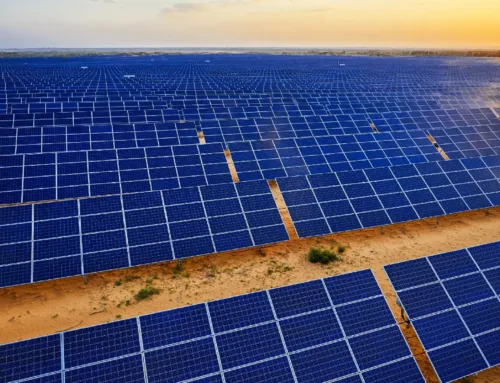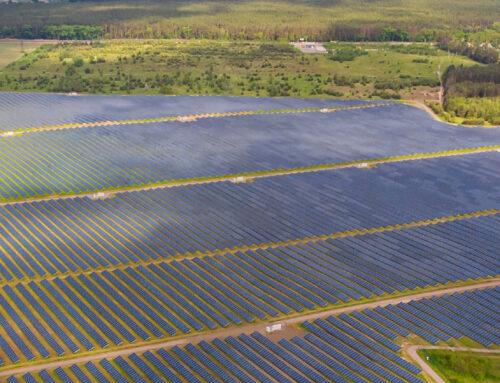
India has installed 45.6 GW of large-scale solar capacity, falling 14.4 GW short of the government-set target of installing 60 GW by 2022.
The government set an ambitious goal of adding 175 GW of renewable energy by 2022, including 100 GW of solar, in 2015. Large-scale solar installations were targeted for 60 GW, while rooftop solar was targeted for 40 GW. So far, the country has only installed 7.6 GW of rooftop solar.
Raj Prabhu, CEO of Mercom Capital Group said “While the 100 GW of solar by 2022 is out of reach at this point, the 60 GW large-scale solar target is very achievable. A little push from the government to remove some of the hurdles facing the industry can help India meet its large-scale solar goal. If the government can facilitate the commissioning of stalled projects, that alone can get us over the line”.
Large-scale solar installations account for the majority of the country’s total installations. They accounted for roughly 86% of all solar installations to date.

The utility-scale project deadline of 2022 appears to be within reach but following are the challenges faced by the solar sector:
The Great Indian Bustard Dilemma
In Rajasthan and Gujarat, the Great Indian Bustard (GIB) issue continues to delay project commissioning. The Supreme Court recently heard two petitions that were examined by a committee formed specifically to look into projects affected by the GIB issue. The developers of the two projects were directed to install bird diverters by 20th July 2022. In the future, all developers are required to contact the committee, which will review each case individually. Project development in the area remains stalled while the issue is still being resolved. The court is attempting to strike a balance between protecting rare bird species and allowing for cost-effective power transmission.
Supply Chain Issues
Commodity prices have reached a new high as economies around the world slowly recover from the pandemic’s effects, with demand increasing across industries. This price increase has impacted the solar industry as well, raising module prices and, as a result, project costs.
Most developers appear to be dealing with the challenge of managing project costs while dealing with low tariff bids in most government-issued tenders. The ALMM (Approved List of Models and Manufacturers) for modules used in these projects has limited developers’ options.
The GST & BCD Strain
In September 2021, the GST council announced a 5% to 12% increase in the GST for “specified renewable energy parts,” which went into effect the following month. The effective GST rate on wind and solar power at the project level is around 13.8%. The Ministry of Power announced in March that it would write to the Department of Revenue recommending a uniform 5% GST on all renewable energy components. The developers continue to take the burden of the high prices affecting the overall project cost while waiting for an update on this.
Basic Customs Duty (BCD) is also one of the major issues developers are dealing with. The decision to impose BCD on solar cells and modules did not allow projects that had already been auctioned to be grandfathered. Unless grandfathered, BCD will affect approximately 15 GW of projects awarded before 1st March 2021, according to the National Solar Federation of India. Many projects that were awarded before the BCD announcement were supposed to be completed before the BCD took effect.
However, the pandemic and delays caused by the Supreme Court’s decision in the GIB case have pushed the start date of many of these projects beyond 31st March 2022. Developers are urging grandfathering projects to avoid the time-consuming regulatory process of filing petitions with the electricity regulatory commission and receiving reimbursements in small instalments via annuity. However, developers imported nearly 10 GW of solar modules in the first quarter of 2022, stockpiling ahead of the BCD implementation, which will help with installations this year.
“Reaching the 60 GW large-scale solar goal will be a significant achievement that will build investor confidence and demonstrate that the government is serious about utility-scale development. It also adds weight to the 280 GW goal set for 2030 and will make the large-scale solar market a much more attractive investment and a good long-term bet,” added Prabhu.
Click Here for more updates ornatesolar.com.
Resource: Mercom India











Leave A Comment